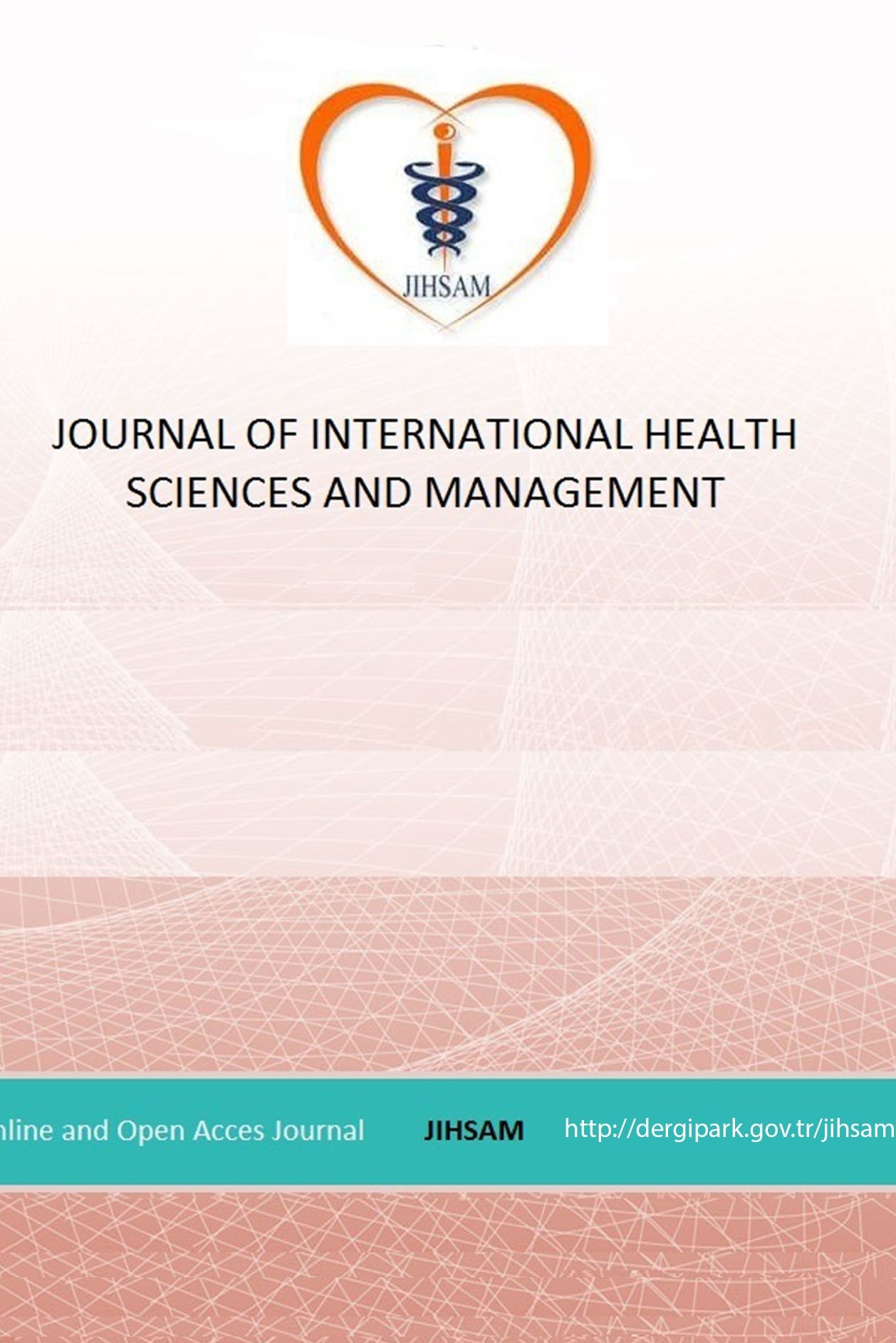PERFORMANCE ANALYSIS OF OECD COUNTRIES BASED ON HEALTH OUTCOMES AND EXPENDITURE INDICATORS
PERFORMANCE ANALYSIS OF OECD COUNTRIES BASED ON HEALTH OUTCOMES AND EXPENDITURE INDICATORS
Health, Outcome, Expenditure Performance,
___
- Adil, R., Abbas, M., Yaseen, A. (2016). Determinants of efficiency in health sector: DEA approach and second stage analysis. Journal of Accounting and Finance in Emerging Economies, 2(2), 83-92.
- Alptekin, N., Şıklar, E. (2009). Multicriteria performance evaluation of Turkish pension stock mutual funds: Topsis method, Dumlupınar University Journal of Social Sciences, 24–5, 185–196.
- Asandului, L., Roman, M.,Fatulescu, P. (2014). The efficiency of healthcare systems in europe: a data envelopment analysis approach. Procedia Economics and Finance, 10(14), 261–268.
- Blendon, R. J., Kim, M.,Benson, J. M. (2001). The public versus the world health organization on health system performance. Health Affairs, 20(3), 10–20.
- Çelik, Y. (2011). Health Economics, Ankara: Siyasal Bookstore
- Çelik, Y., Khan, M., Hikmet, N. (2017). Achieving value for money in health: a comparative analysis of OECD countries and regional countries. International Journal of Health Planning and Management, 32(4), 279–298.
- Çelikbilek, Y. (2018). Multi-criteria decision making methods with annotated and comparative health sciences applications, Editor: Özdemir, M., Ankara: Nobel Academic Publishing.
- Chen, C. T. (2000). Extensions of the TOPSIS for group decision-making under fuzzy environment. Fuzzy Sets and Systems, 114(1), 1–9.
- De Silva, A., Valentine, N. (2000). A framework for measuring responsiveness. Geneva: World Health Organization.
- Feo, O. (2008). Neoliberal policies and their impact on public health education: observations on the venezuelan experience. Social Medicine, 3(4), 223–231.
- Hafner, T., Shiffman, J. (2013). The emergence of global attention to health systems strengthening. Health Policy and Planning, 28(1), 41–50.
- OECD. (2018). OECD Health Statictics, https://data.oecd.org/health.htm, access date:05.06.2019.
- Paglin, M. (1974). Public health and development: a new analytical framework. Economica, 41(164), 432-441.
- Paksoy, S. (2017). Current approaches in Multi-Criteria Decision Making. Adana: Karahan Bookshop. Payne, G., Laporte, A., Deber, R., Coyte, P. C. (2007). Counting backward to health care's future: using time‐to‐death modeling to identify changes in end‐of‐life morbidity and the impact of aging on health care expenditures. The Milbank Quarterly, 85(2): 213-257.
- Potrafke, N. (2010). The growth of public health expenditures in OECD countries: Do government ideology and electoral motives matter?. Journal of health economics, 29(6): 797-810.
- Rivera, B. (2001). The effects of public health spending on self-assessed health status: an ordered probit model. Applied Economics, 33(10): 1313-1319.
- The Ministry Of Health. (2012). Health system performance assessment of Turkey 2011. Ankara.
- Şahin, I., Özcan, Y. A., Özgen, H. (2011). Assessment of hospital efficiency under health transformation program in Turkey. Central European Journal of Operations Research, 19 (1):19–37.
- Schütte, S., Acevedo, P. N. M., Flahault, A. (2018). Health systems around the world - a comparison of existing health system rankings. Journal of Global Health, 8(1):1-9.
- Şener, M., Yiğit, V. (2017). Technical efficiency of health systems: a research on the OECD countries, Journal of the Institute Of Social Sciences Of Suleyman Demirel University, 1(26): 266-290.
- Shafii, M., Hosseini, S. M., Arab, M., Asgharizadeh, E., Farzianpour, F. (2016). Performance analysis of hospital managers using fuzzy ahp and fuzzy topsis: Iranian experience. Global Journal of Health Science, 8(2):137–155.
- Soba, M., Akcanlı, F., Erem, I. (2012). Efficiency measurement and performance evaluation for chosen companies registered in istanbul stock exchange: data envelopment analysis and topsis method, Selcuk University Journal of Social Sciences, 27: 229-243.
- Tatar, M. (2011). Financing health care services: development of social health insurance in Turkey, Journal of Social Security, 1 (1):103-133.
- Teleş, M., Çakmak, C., Konca, M. (2018). Comparison of health systems performance of countries in the european union cycle, Management and Economics, 25(3): 811-835.
- Tüylüoğlu, Ş., Tekin, M. (2009). The effects of income and health expenditures on life expectancy at birth and infant mortality, Çukurova University Journal of IIBF, 13 (1): 1-31.
- Wang, Y-M., Elhag, T. M. S. (2006). Fuzzy topsis method based on alpha level sets with an application to bridge risk assessment. Expert Systems with Applications, 31(2): 309–319.
- WHO (2000). The world health report 2000: health systems: improving performance. World Health Organization.
- Yayın Aralığı: Yılda 2 Sayı
- Başlangıç: 2015
- Yayıncı: Sedat BOSTAN
EXAMINING FACTORS THAT HAVE AN IMPACT ON HOSPITAL PREFERENCES OF UNIVERSITY STAFF
Aynur TORAMAN, Dilek KOCABAŞ, Ramazan ERDEM
BENEVOLENCE OR COMPETENCE WHICH IS MORE IMPORTANT FOR PATIENT LOYALTY?
Mahmut AKBOLAT, Mustafa AMARAT, Özgün ÜNAL, Elif Saba SÜTLÜ
FUTURIST STUDY ABOUT THE FUTURE OF HEALTH SECTOR
Ramazan ERDEM, Dilruba UĞURLUOĞLU
THE IMPACT OF THE PATERNALIST LEADERSHIP ON ORGANIZATIONAL CYNICISM: A RESEARCH IN THE HEALTH SECTOR
EVALUATION OF HEALTHY LIFESTYLE BEHAVIORS OF UNIVERSITY STUDENTS
Yunus Emre ÖZTÜRK, Ramazan KIRAÇ
PERFORMANCE ANALYSIS OF OECD COUNTRIES BASED ON HEALTH OUTCOMES AND EXPENDITURE INDICATORS
HOSPICE-PALLIATIVE CARE INTERNATIONAL ORGANIZATIONS AND COUNTRIES
Çiğdem Müge HAYLI, Emrah FELEK
HOW DOES FATIGUE IN INDIVIDUALS WITH CHRONIC OBSTRUCTIVE PULMONARY DISEASE EFFECT DEPENDENCY STATUS
DELIVER PREFERENCE AND INFLUENCING FACTORS IN WOMEN GIVING BIRTH
